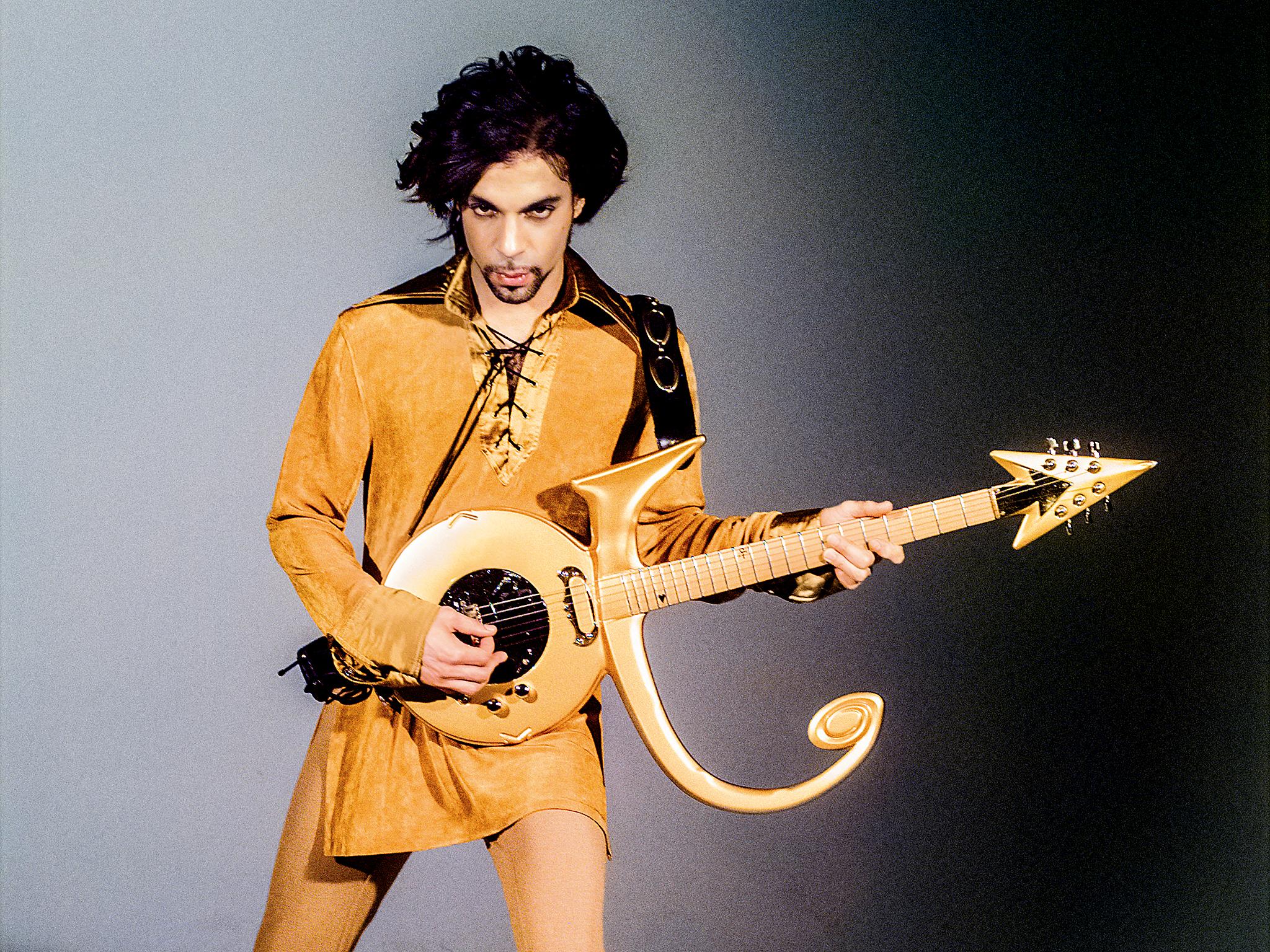Picturing Prince: A glimpse into the Purple Rain star at Paisley Park
A new book by former Prince art director Steve Parke, reveals the star, who died a year ago, working at his Paisley Park complex, with photos and anecdotes

Prince was such a private figure that any insight into his creativity is greedily welcomed. The latest comes from a former art director that has pulled together shots of the music legend from over a decade and is publishing them along with anecdotes that give glimpses of working life in Prince's studio complex, Paisley Park.
Picturing Prince has been compiled by Steve Parke, an American artist and photographer that worked with the enigmatic artist for 13 years from 1988. He has selected an overview from hundreds of images culled from album-cover photo shoots to more laidback moments, as with Prince shooting hoops at midnight. Through a series of vignettes and memories, Parke builds up a portrait of a figure overflowing with energy, often infuriating to work for, but passionate about music and with an impish sense of humour.
It was the passion that would prove vital in this period of Prince's creative life. In 1988, the musician was seemingly at the height of his powers, a year after releasing the brilliant Sign o' The Times. Yet his talent was already showing mercurial tendencies, having pulled the ready-to-release Black Album and hastily recording what became that year's Lovesexy. It was the harbinger for a tumultuous few years that saw Prince disown his own name and eventually break ties with the label, Warner Bros, that he had been involved with for 18 years and break out on a more independent-minded path.
Apparently a typical move for Prince, Parke's invitation to the Paisley party came out of the blue. Working as a gig photographer in Virginia, he had befriended guitarist Levi Saucer Jr, who later joined Prince's band and offered to show the boss the snapper's photorealistic art. Parke was called to paint stage-floor designs for a post-Lovesexy tour, warned the last team had been fired for working too slowly. The multi-tasker showed his stamina – staying up for 72 hours – and jobs continued to come his way, an early highlight being the Graffiti Bridge soundtrack cover, along with designs for tour programmes, T-shirts and eventually photo shoots..
At some point, Parke believes 1995, it dawned on him he had been accepted as a full-time artistic factotum, though the only official recognition of a job title came with tour or record company jackets with his name and 'art director' printed on them. “It was never official, like someone signing a piece of paper, but that was what I was doing. The idea was cool, but knowing what the job involves, I was actually art directing myself.” Leafing through the tome, you quickly appreciate Prince was not someone to take “no” or “not possible” as answers, forcing collaborators to work through the night, with 2am often a break for cinema trips or ping-pong games.
More importantly, Prince was happy to share ideas, thoughts and feelings with one of the few non-musicians in the compound. What shines through in Picturing Prince is the subject's humour that ran from cutting put-downs to practical jokes when he took to picking up the phone on unsuspecting callers. Parke remembers one particular all-nighter towards the end of his tenure when as dawn broke Prince pulled the blinds as if to pretend it was still dark. “You know, I could tell the sun was rising.” Even better was that Prince occasionally gave Parke lifts to the unassuming hotel where out-of-towners stayed, his distinctive Plymouth Prowler (purple, natch) dropping off Parke in the morning as departing business guests looked on open mouthed.
It is difficult to get a sense of evolution or development from Parke's randomly accessed memories, but then Parke was at the eye of a storm that was unremitting even when the boss was at his most frustrated and staff had to work out what to say instead of Prince. “It ramped up [when Prince left Warners], when he decided to do things on his own terms, he brought everything in-house. It meant more work for me certainly and other people there.” From the late nineties onwards, Paisley Park gradually became a relative “ghost town” as Prince downsized, made the complex his home and less acts came to hire the studios or rehearsal spaces. No more Chaka Khans or George Clintons.
Parke finally hit the buffers in 2001, when he realised he was not looking forward to monthly flights to Minneapolis from his Baltimore home and wanted to spend more time with his newly born son, Duncan. It is notable, though, that this hit home most forcefully during a conversation with Prince. “I had a picture of [Duncan] on my laptop and Prince one day said, 'I bet you really miss him' and I'm, like, yeah. I hate to say it, but I think that did it. I might even have poked him in the arm and said you're not helping.” And when Parke left, he knew he could not go back even on supposedly one-off jobs. “Couple of days in Prince's world can end up being weeks. He was a very compelling person.”
'Picturing Prince: An Intimate Portrait' by Steve Parke is out now published by Cassell Illustrated, £20. All images © Steve Parke
Subscribe to Independent Premium to bookmark this article
Want to bookmark your favourite articles and stories to read or reference later? Start your Independent Premium subscription today.

Join our commenting forum
Join thought-provoking conversations, follow other Independent readers and see their replies